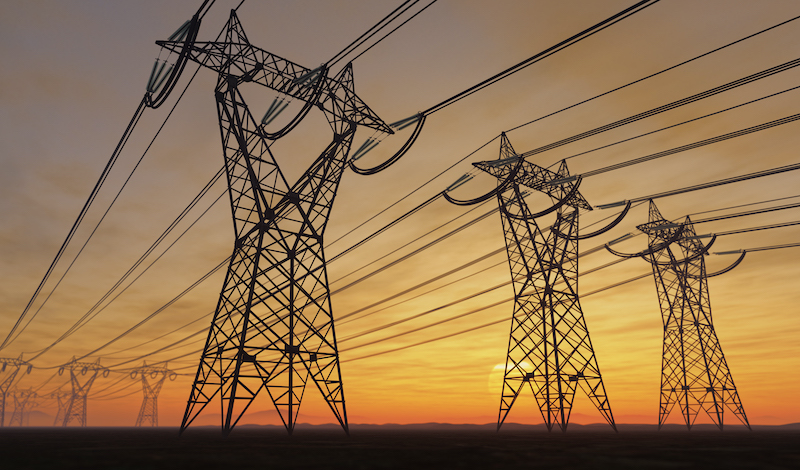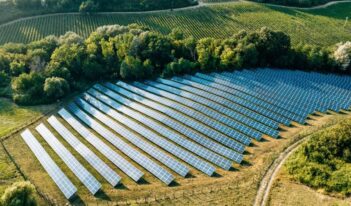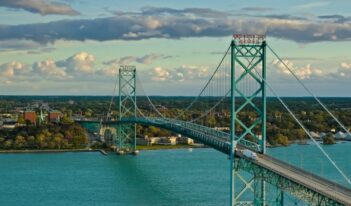
Modifications to New York State’s clean energy laws cleaned up the New York City grid.
Over the last several years, the state and city of New York have made ambitious commitments to transition the state’s electricity grid to renewable energy. But by the end of last year, New York City had made little progress toward these goals—fossil fuels still accounted for 85 percent of the city’s electricity generation.
With the recent announcement of two new transmission projects that will bring clean energy from upstate New York and Canada, though, the city finally appears to be making progress toward its clean energy goals. This progress did not appear out of thin air—it came as the result of deliberate and careful planning from regulators over the course of several years.
The root of these new projects can be traced back to 2015 when New York state adopted an energy plan that called for 50 percent of the state’s electricity to be generated by renewable sources by 2030.
Then-governor Andrew Cuomo touted this ambitious commitment but left the crafting of the plan’s details to the regulators at the Department of Public Service (DPS), the state agency responsible for regulating utilities. In response, DPS created two regulatory mechanisms to implement the clean energy plan in 2016.
One mechanism—a renewable energy standard—obligated utilities to provide electricity generated by renewable sources to consumers. The other mechanism—a zero-emissions credit requirement—mandated that utilities obtain certification from the New York State Energy Research and Development Authority that the electricity supplied to consumers is in fact generated by renewables. In the event that a utility cannot fulfill this requirement, the utility can pay to comply with the law by making alternative compliance payments.
Several years later in 2019, the state passed a new law, the Climate Leadership and Community Protection Act. This law raised the 2030 target from 50 percent of electricity generated by renewables to 70 percent. It also added a new goal target of reaching net zero emissions in the electricity sector by 2040.
Once again, the law left the implementation details to DPS and the state’s energy Authority. Tasked with determining how to implement the new targets, DPS and the Authority proposed changes to the existing clean energy standard.
In a white paper laying out the changes, the state’s energy Authority explained how fossil fuels continued to dominate New York City’s electrical generation in part because of limited “developable sites” for renewable energy. Accordingly, the Authority concluded that “without new transmission capacity,” even new renewables in other parts of the state would fail to displace fossil fuels in New York City.
To address the need for new transmission capacity into New York City, the Authority proposed providing financial support for projects that increase renewable energy delivery to the city. Furthermore, to ensure the renewable energy targets and their underlying environmental aims would be met, the proposal suggested several eligibility criteria. For example, projects would need to show that they would lead to new renewable generating capacity, and not just a redirection of existing power. In addition, projects would need to demonstrate that they will increase the delivery of renewable power into NYC. To meet the latter requirement, project developers would need to show that the energy will be delivered by new transmission capacity.
The Public Service Commission adopted the Authority’s plan in October 2020 and shortly thereafter it issued a notice requesting project proposals. Following the review process, New York Governor Kathy Hochul announced the award of two contracts to build two new transmission lines across the state to deliver power to New York City.
The two projects—the Clean Path NY and the Champlain Hudson Power Express transmission lines—are expected to deliver more than one third of New York City’s annual electric consumption, according to the Governor’s office.
The projects are not without opposition. Several Canadian Indigenous groups have opposed the Champlain Hudson line because they were not consulted about certain aspects of the projects and because the project could cause environmental damage.
Other Indigenous groups supported the project, though, citing a “responsibility as stewards of the environment” to try to mitigate “the dangers climate change and global warming.” In addition, the Governor’s office has claimed that the projects “will avoid, minimize, and mitigate environmental damages.”
Beyond the environmental impacts and concerns, proponents of the projects have cited analysis showing that the lines will bring billions of dollars’ worth of economic and public health benefits to the state. For example, benefits will accrue from reduced fossil fuel consumption which is also expected to reduce “asthma-related hospital visits.” Constructing the new lines is also projected to create thousands of jobs.
By greenlighting these projects, New York is set to clean up the electrical grid in the New York City area. In doing so, the state has demonstrated how regulators can create, revise, and improve the systems needed to tackle climate change.



